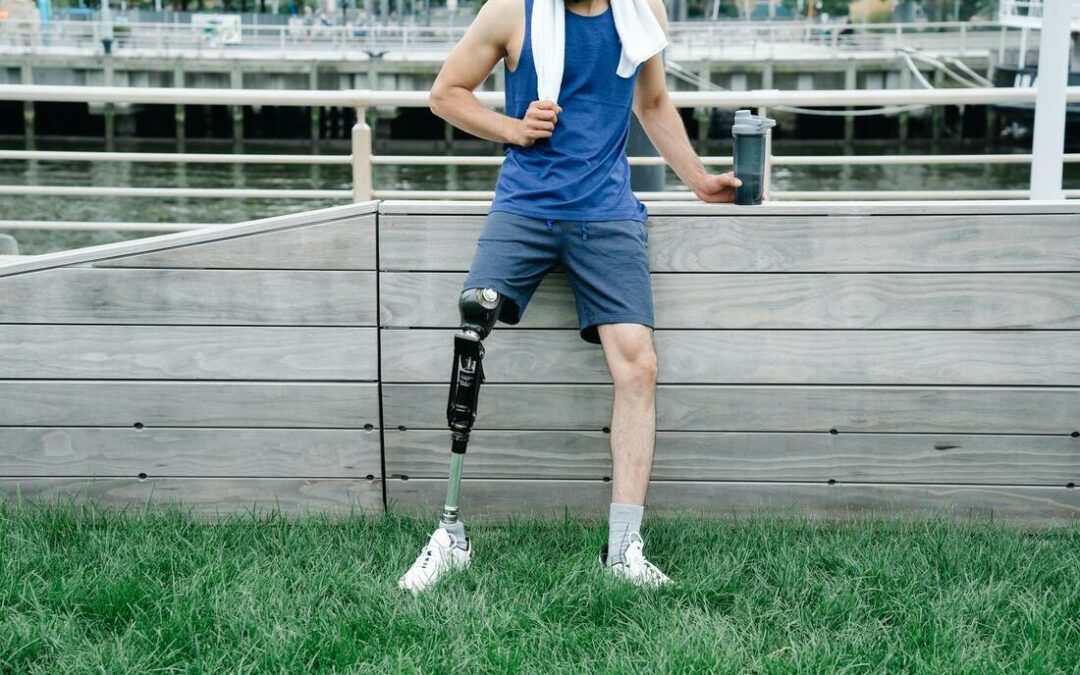If you’re an amputee, you’ve probably considered prosthetics as a possible treatment option. However, the world of prosthetics is rather complicated, which is why you should do as much research as possible and consult with your doctor before you finalize any decisions.
We’ve devised this guide in hopes of helping amputees decide whether BKA prosthetics are a good fit for them. We’ll discuss how to know if you’re a good candidate, what the fitting process is like, and all other important information about prosthetics.
Are Below Knee Prosthetics for Me?
Prosthetic legs have the power to change your life. However, not everyone is a suitable candidate. So, how do you know whether BKA prosthetics are a good fit for your needs?
First and foremost, always consult with your prosthetist. They are familiar with your particular case and will know best whether you’re a good candidate for them or not.
If you’re impatient and would like to learn as much as possible before your doctor’s visit, here’s what you must know about below the knee prosthetics.
To be able to wear a below the knee prosthetics, you must have some soft tissue left. This helps with cushioning the bone to avoid further complications. Some other important indicators are the health of the surrounding skin, health of your other leg, and the amount of pain you experience on a daily basis.
If you’re a suitable candidate, the next step is getting fitted for prosthetics and choosing the correct components.
The Process of Getting Ankle Prosthetics
The fitting process is the most important part of your prosthetics journey. It has to be done properly and without rush to avoid any further complications. Here’s how it usually goes:
- Make sure that your leg is fully healed. Trying to put a prosthesis over a fresh injury will only result in a poor fit and even more damage.
- You’ll then have several fitting appointments to ensure that all measurements are correct.
- Once all measurements are taken, the company of choice will either outsource production or produce it in-house.
- Lastly, you’ll probably have to undergo physical therapy. This is an important component because it helps you adjust to your new leg, but also because it shows whether there are any issues with the prosthesis, which should be corrected immediately.
Prosthetic Leg Components
There are three main components of each below the knee prosthesis:
- The prosthesis – made from lightweight materials and some contain ankle joints
- The socket – molding that fits over your stump and is used to attach the prosthesis to your leg
- Suspension – suspension is what keeps your prosthesis attached to your leg, usually bu vacuum, suction, or distal locking
What Are K-Levels and Why Are They Important?
K-levels are basically a scale that’s used to describe how well you’ll be able to use your new prosthetic limb. The scale goes from 0 to 4, and your doctor is the one who determines which level you’re at.
It’s important to note that K-levels aren’t set in stone. They can improve or worsen over time, depending on treatment and physical therapy. Here’s what each K-level represents:
- K0 level – the patient is not suitable for prosthetics and it can’t improve their life
- K1 level – the patient is able to use prosthetics but only on flat surfaces
- K2 level – the patient is able to use prosthetics to overcome moderate challenges like stairs
- K3 level – the patient is able to use prosthetics in all environments and conditions
- K4 level – the patient is able to use prosthetics so well that it even exceeds the conventional mobility level
How to Put on a Prosthetic Leg
Putting on a prosthetic leg is tricky. It has to be fitted properly to avoid any further damage or pain. Here’s how the process usually goes:
- Remove the shrinker and check the stump for skin irritation.
- Place the sock over the stump. The seam should be in the back.
- Put on a liner and pull it up firmly.
- Make sure that there’s no gap between your stump and the liner.
- Hold your liner at the knee and place your stump in a prosthesis. The prosthesis should be standing upright while you do it.
- Push it down firmly and don’t take the pressure off until you stand up.
- Fold the sock over the liner and the socket.
- Roll the silicon sleeve up your leg.
- Make sure that the silicone sleeve is snugged properly and smooth out any wrinkles.
How to Care for Your Below the Knee Prosthetics
Prosthetics require regular maintenance. You should clean your prosthesis every day, without exception. Doctors recommend avoiding harsh chemicals because they can damage the prosthesis and your skin. Your prosthesis should be fully dry before putting it on.
Will Your Below the Knee Prosthetics Be Covered By Insurance?That depends on the severity of your situation, as well as your insurance plan. We recommend consulting with your insurance agent to check what is included in the deal and what’s not included.
Final Thoughts
Getting a prosthesis is a strenuous process filled with ups and downs. However, it is going to transform your life for the better. Make sure to choose a suitable prosthetic practitioner who understands and cares about your problems. They will also be a part of your journey, so compatibility is the key.
If you want more information, you can always reach us at the Align clinic. Either book a free consultation call with one of our prosthetic practitioners or stop by our offices – we have locations all over the United States.




